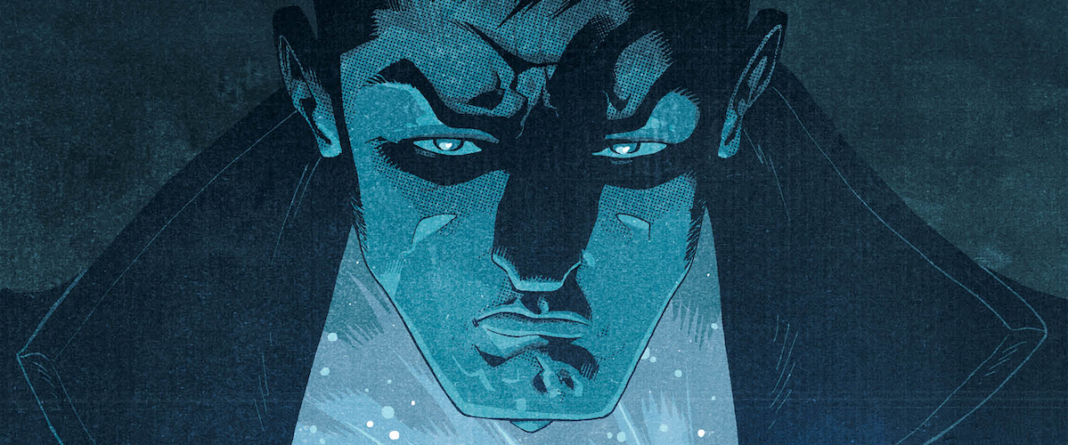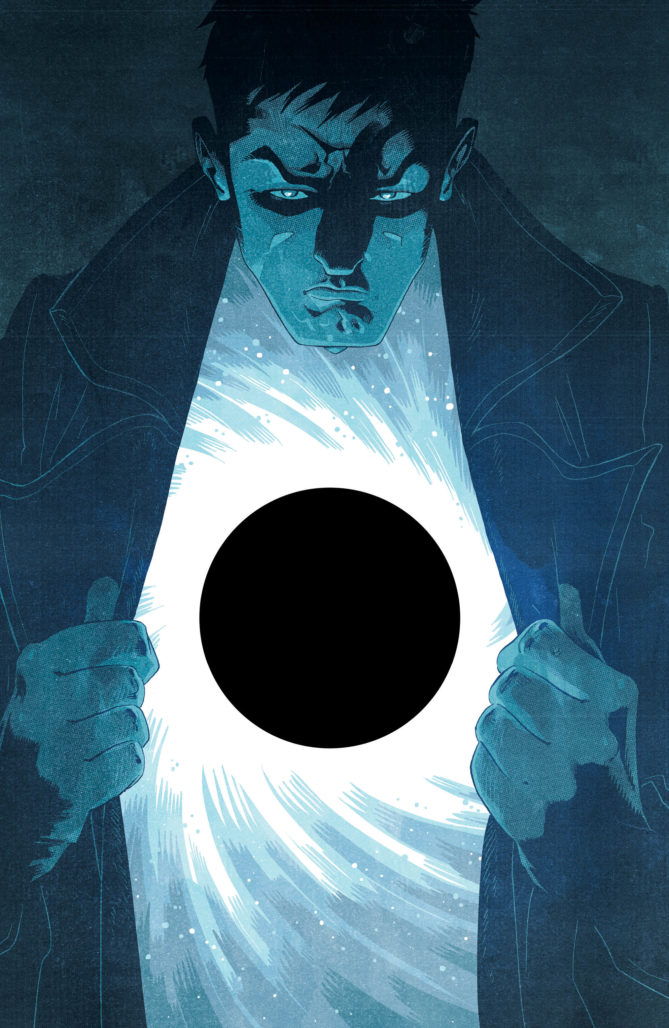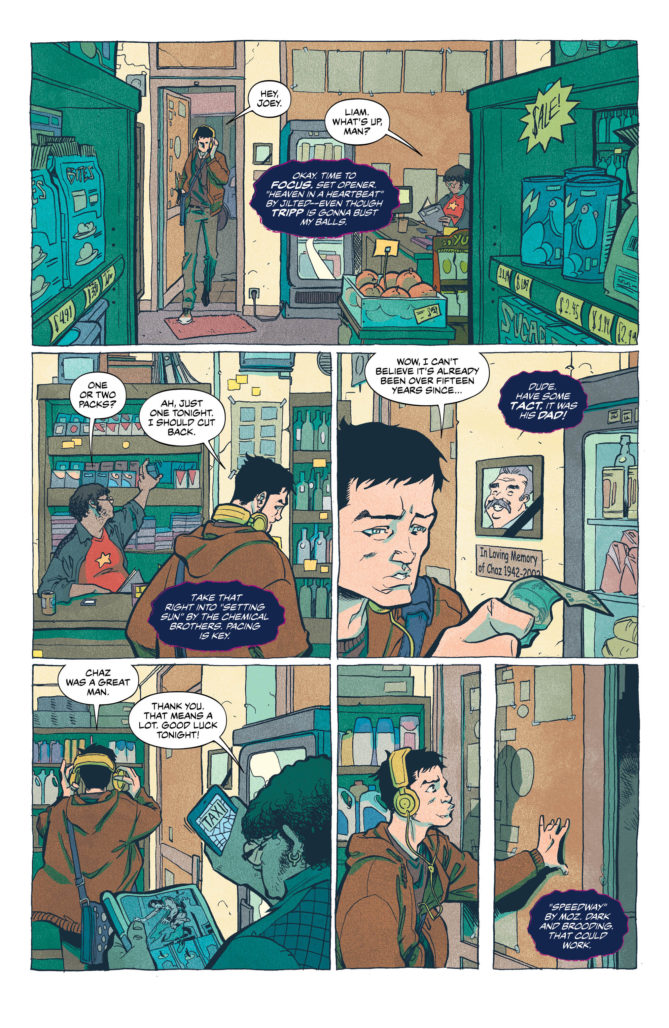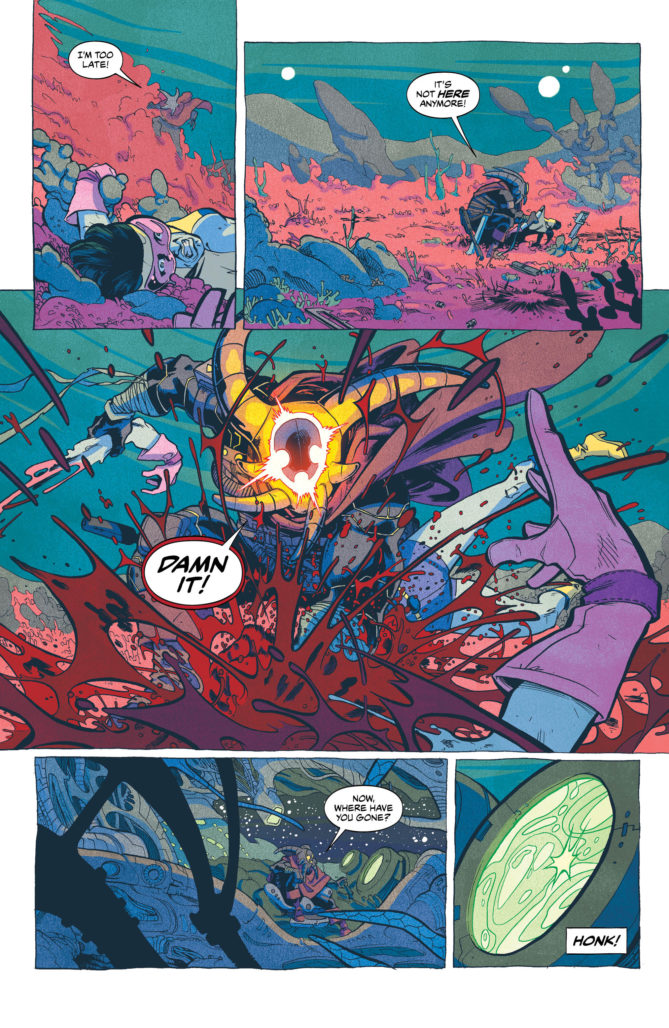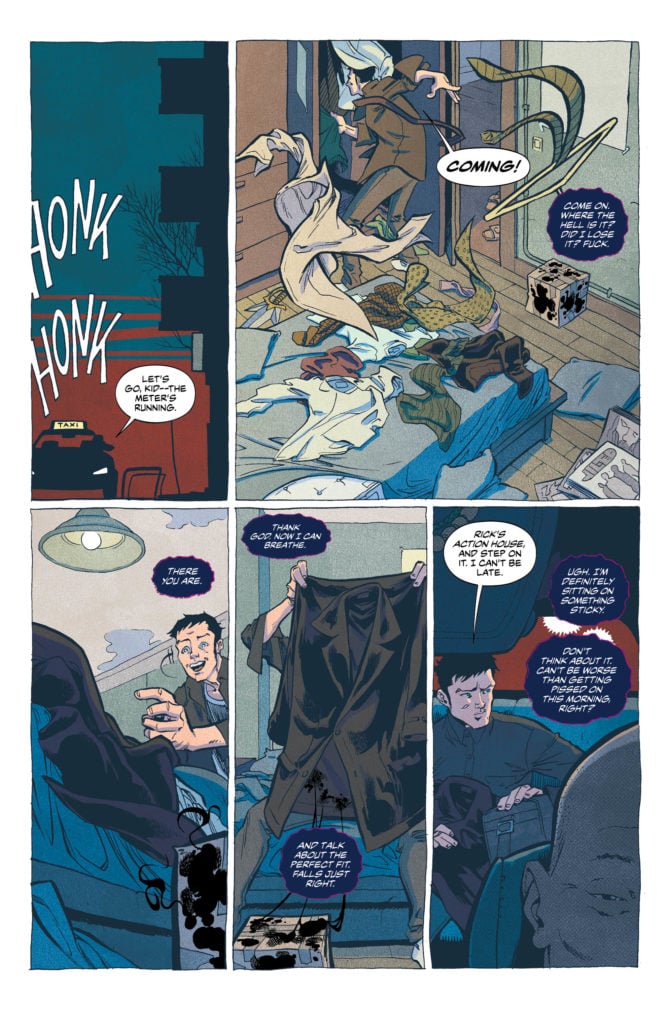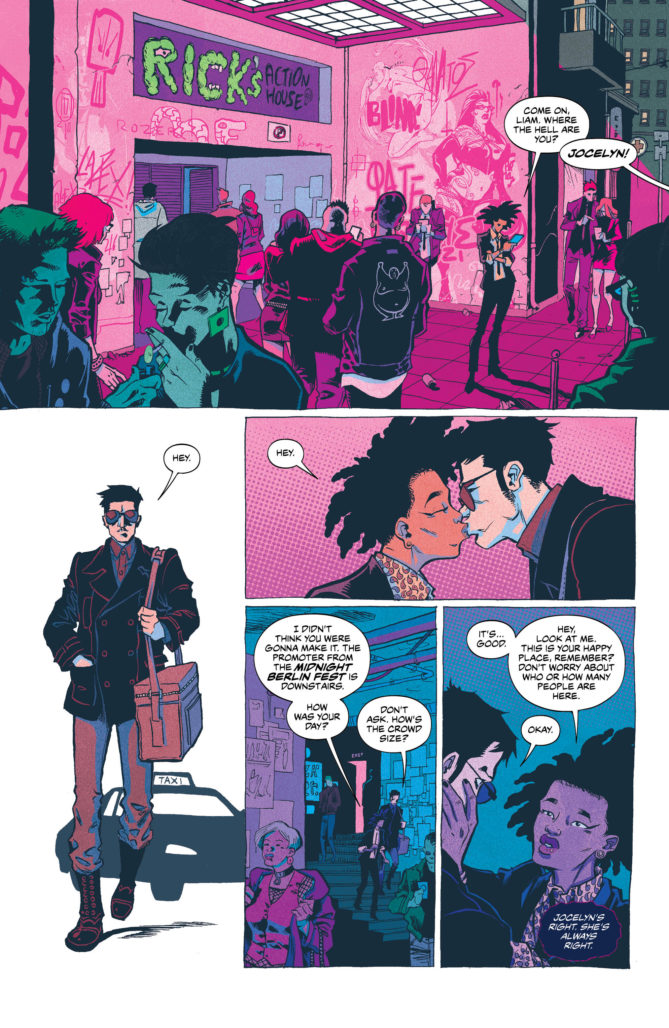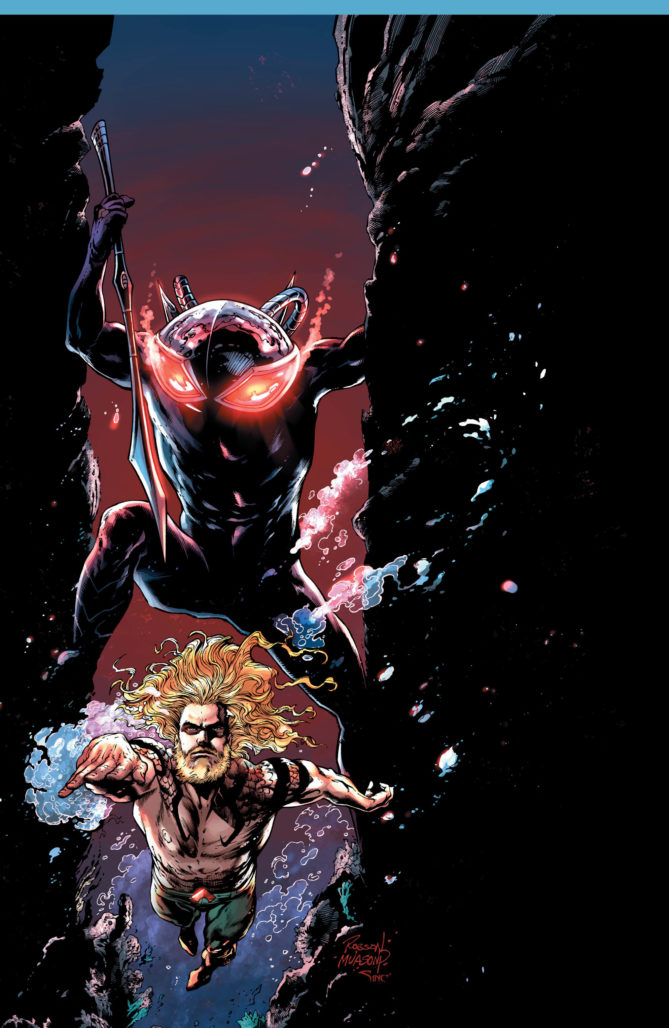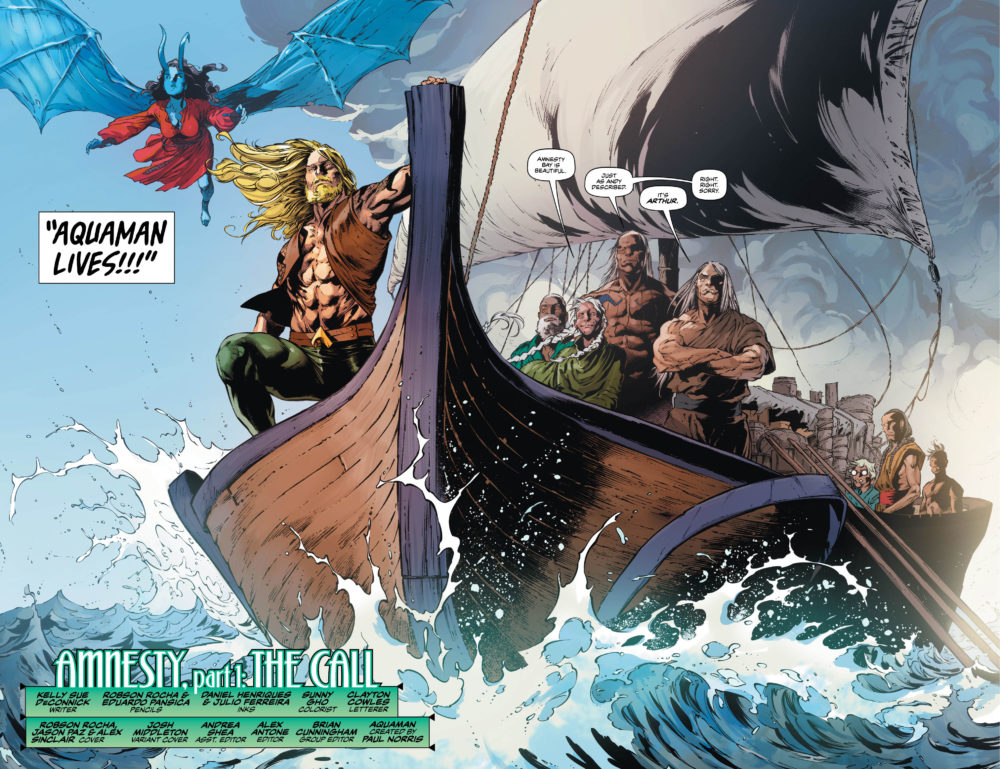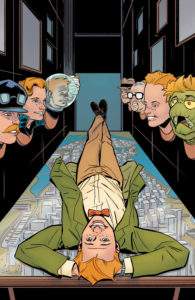DC Comics is trying something new. In the wake of their Rebirth initiative, the publisher has rapidly expanded its content to include diverse new imprints such as Young Animal, Wildstorm, Jinxworld, Wonder Comics, Black Label, Ink, and Zoom. As their lineup expands, it can be hard to figure out what to pick up each week. That’s what our team is here to help with, every Wednesday, with the DC Round-Up!
THIS WEEK: Young Animal retains its crown as the most consistent purveyor of interesting and unexpected ideas at DC Comics.
Note: the reviews below contain spoilers. If you want a quick, spoiler-free buy/pass recommendation on the comics in question, check out the bottom of the article for our final verdict.
 Collapser #1
Collapser #1
Writers: Mikey Way and Shaun Simon
Artist: Ilias Kyriazis
Colorist: Cris Peter
Letterer: Simon Bowland
Collapser #1, the newest comic from DC’s pop-up imprint Young Animal, is a story about fighting the darkness inside during your (listless/feckless/challenging) 20s. That’s the central metaphor at work here, anyway. The actual plot itself is literally about a young man—a DJ, in New York City I think, who never knew his mother and has issues with his day job/romantic relationships—who inherits a black hole. His aforementioned mother is some sort of outer space adventurer, who previously wore the black hole until she passed…recently. Upon her death, some unknown actors ship the hole (sans directions) to her son, who gets consumed by it and becomes the unwitting target of some other unknown but this time evil actors who’d like to get that black hole back.
It’s sort of a classic concept in that way, heavy with tropes: the child of destiny whose unknown parent was (presumably) a hero, the dayjob wage slave whose creative frustrations are stunting other parts of his life, the seemingly evil galactic threat we know our hero will have to ultimately deal with, etc. But this is also Young Animal, an imprint in which nothing is ever as straightforward as it first seems. What adds layers of formulism and experimentation to Collapser is its execution, rather than the concept. To really build and drive home the metaphor that the real challenge is the darkness fighting to emerge within all of us, this book gives its protagonist an interiority that has become elusive in modern comics following the veritable death of the thought balloon.
Indeed, all through Collapser #1 dark and wavy inset bubbles (done here excellently by letterer Simon Bowland) pop-up to really clue us in on what our hero is thinking, how he is silently reacting to the world around him, whether faced with a sudden knock at the door or total sci-fi craziness. Bowland does a great job crafting these bubbles, using color and font to establish these are not thought balloons, they are very much their own sort of different thing. What carves that out further is the way the writer team of Mikey Way and Shaun Simon handle them. Their script works hard to make the contents of these balloons an interesting and authentic internal monologue.
Rather than using the protagonist’s thoughts to clue readers in on motivations that the story itself should do the work of making obvious with visuals (given the nature of the medium, and all), we get an immersive looking inside our hero’s head. We get his emotionality, his fears, his concerns, his rationales (no matter how obviously dysfunctional), etc. We get a very clear and well-defined sense of who our hero is as a person, which really works wonders in vesting the audience in his journey and by extension this story. There’s a little bit of train of consciousness going on here, which is a literary technique from prose writing that works really well in a comic drawn this intricately. This could maybe get a little heavy, bogging down the form, but Collapser #1 is well-paced and, quite simply, visually stunning.
Which brings me to what I think this comic’s real strength is: Ilias Kyriazis artwork along with the Cris Peter colors. It sounds conflicting, but this is a book that manages to feel both gorgeous and gritty. The panels are detailed and immersive, totally unafraid to put our hero in a crowded bodega that demands all kinds of patient linework. For the science fiction scenes and especially the stuff in space, Kyriazis’ work is so versatile that its able to bounce right up there, lending all of that an almost B-movie aesthetic, if what we were watching was a B-movie done by a keen cinematographer (the layouts here are all gold) with a massive budget. And the choices Peter makes with the semi-washed out color palette are great too, serving the story by giving it a hip color palette that I would describe as vibrant…but not too vibrant (try to make sense of that!).
Overall, I found Collapser #1 to be an entertaining and assured story, one that was experimental but knew from its start exactly what it wants to be and why. I could say the same thing about the new generation of Young Animal Doom Patrol comics, which launched with a new #1 issue earlier this month. Young Animal, it would seem, has itself far more figured out than our hero in Collapser #1.
Verdict: Buy
 Aquaman #50
Aquaman #50
Writer: Kelly Sue DeConnick
Artists: Robson Rocha and Eduardo Pansica
Inkers: Daniel Henriques and Julio Ferreira
Colorist: Sunny Gho
Letterer: Clayton Cowles
Kelly Sue DeConnick’s Aquaman run has gone full Hollywood, and I love it. DeConnick’s run, which as been primarily illustrated by Robson Rocha with Viktor Bogdanovic filling in some gaps, started with a thoughtful dream-like deconstruction of Arthur Curry. It came after wider universe events took him off the board for a while, putting him on an island that was a whole lot like limbo. On that island, DeConnick put Aruther through some tough paces, simultaneously making him really earn a resurrection while also subtly establishing the sea in the DC Universe as a place with not just its own civilization and mythology, but also with its own set of governing deities. It was a story that lent itself to some fine visual poetics while also making a sound argument for how important Arthur and his realm really are.
Then the run went Hollywood, and what I mean by that is it leapt full-bore back into the gonzo, action movie side of Aquaman that just recently inspired a successful major motion picture. In Aquaman #49, we got him reuniting with his love Mera. Now, in Aquaman #50, we get him returning to his lighthouse, to Amnesty Bay, and, perhaps most importantly, coming to a point by the end of the issue in which he will soon face his most interesting foe, Black Manta. This is, simply put, an oversized issue that reads quick, keeping you turning the pages until you get to the end and just badly want more story (my favorite type of superhero comic).
Really, I think the structure of this realm sort of mirrors the journey in which we’ve seen the main character engaging. The creative team was earning its way into the full world of the character, showing us with the first arc how much it understand the overarching core importance of the world and those in it. Now with that established, they’re starting to really cut loose and incorporate the wider, more fun elements. It’s an interesting and patient way to structure a superhero run, and I’ve definitely felt a positive effect on my own engagement.
Past that, this is simply a well-told superhero story, one that understands the importance of big story beats (Aqualad!), secrets that characters withhold from each other, and the use of narrative concepts to tie-in and emphasize broader themes in the story. This run is eight issues old, having started back in December, but it’s quickly becoming my favorite stretch of Aquaman comics since Geoff John’s phenomenal New 52 run work with the character.
Verdict: Buy
 Round-Up
Round-Up
- I would have written about Superman’s Pal Jimmy Olsen, which was 100 percent my favorite DC book this week, but I already heaped copious praise upon it a few weeks back after the publisher gave us a chance to do an advanced review. You can find that piece here.
- I have no idea why Bruce was a snowy mountain getting his throat slit by kids in Batman #75, or why his dad is back in town with Gotham Girl as a sidekick, but despite that severe (and at this point in the run slightly frustrating) disorientation, villains running Gotham City is a fun conceit.
- I don’t know how many times I’ve written this, but I really feel like this Justice League run is at its best when we get Luthor vs. Martian Manhunter/Hawkgirl stories, like we do in this week’s Justice League #28.
- I don’t really know what to say about Pearl #11, other than to point out Michael Gaydos is doing some absolutely stunning things with his work here. Pearl is a satisfying and lush read, and I really like the growth arc for the two main characters.
- Finally, I’m interested to see where Teen Titans goes from here, what with the most pressing questions from the start of the run—what’s up with Crush and her dad? can Robin manage a secret prison?—a little less pressing now.
Miss any of our earlier reviews? Check out our full archive!


